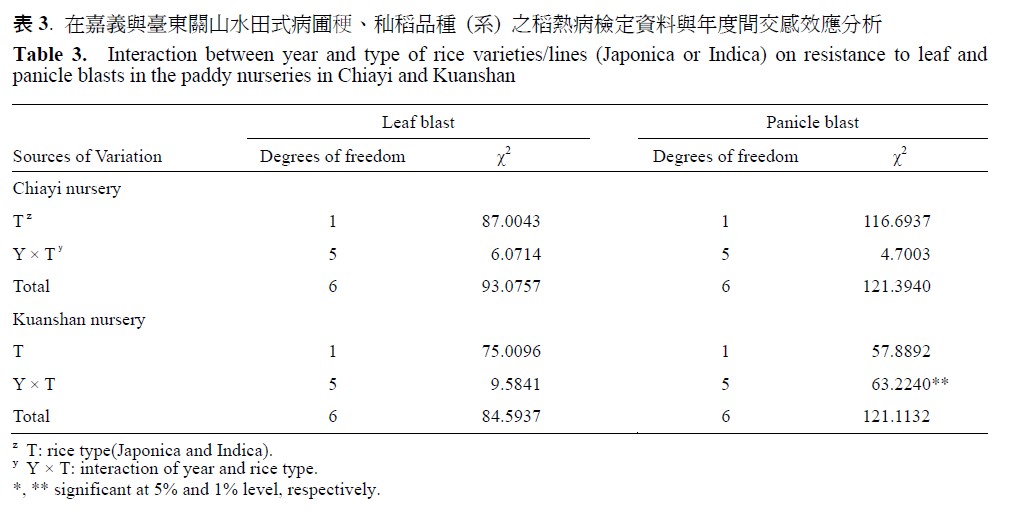All issues

Author:Dah-Jing Liao and Lung-Che Chen*
Abstract:
Breeding rice (Oryza sativa) for resistance to blast disease caused by Magnaporthe grisea (synonym Pyricularia oryzae) is an important strategy for control of this disease in Taiwan. Field trials were conducted in disease nurseries (one paddy field and one upland field in Chiayi and one paddy field in Kuanshan) in Taiwan, during 2003–2008 to screen 1161 varieties and lines of rice collected from nine research institutes and extension stations in Taiwan for resistance to leaf blast and/or panicle blast. Results showed that, among Japonica rice tested, the number of varieties/lines with resistance to leaf blast was higher than the number with resistance to panicle blast. Also, the number of Japonica rice varieties/lines with resistance to leaf blast in the paddy nursery in Chiayi was significantly (P < 0.05) higher than that in the upland nursery in Kuanshan. Thus, Japonica rice varieties/lines were more susceptible to blast diseases in the upland nursery than in the paddy nursery. For Indica rice varieties/lines, rice blast was more severe in the upland nursery in Kuanshan, compared to the results of the tests in the paddy nursery in Chiayi. Also, Indica rice varieties/lines were more susceptible to blast diseases in the second crop season than in the first crop season. In contrast, the disease severity indices for leaf blast and panicle blast in Japonica rice were not different significantly (P > 0.05) between the two crop seasons of each year. Among the top ten commercial rice varieties in Taiwan, seven were resistant to both leaf and panicle blasts at the time of their release for cultivation; however, there were only three varieties with resistance to leaf blast and one variety with resistance to panicle blast in the tests in 2008. This indicates that the resistance in some varieties may have broken down and whether the loss of resistance in a rice variety is due to presence of new race(s) of M. grisea remains unknown and thus, warrants further investigations.
Key words:Rice, Oryza sativa, Blast, Magnaporthe grisea, Pyricularia oryzae, Disease nursery
Download:![]() PDF Links
PDF Links
- 1. Development of Tractor-Mounted Seedling Transplanter for Sweet Potato
- 2. Synergistic Effect of Additional Gas on the Toxicity of Phosphine to Sitophilus oryzae and Sitophilus zeamais (Coleoptera: Dryophthoridae)
- 3. Effects of Temperature and Solar Radiation on Growth Traits and Plant Elements in Purple Leafy Sweet Potato
 Submit your manuscript
Submit your manuscript
 Guide for authors
Guide for authors